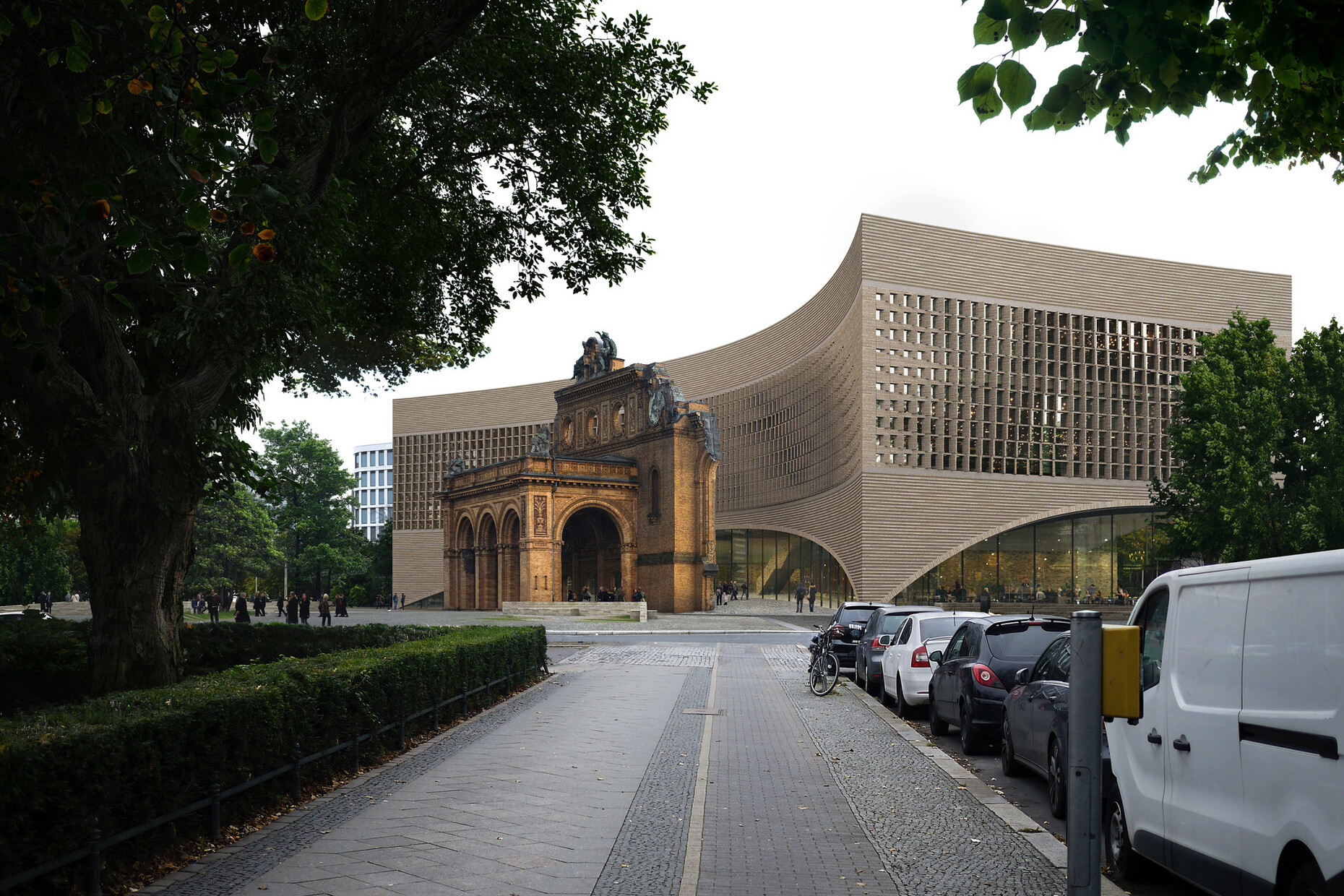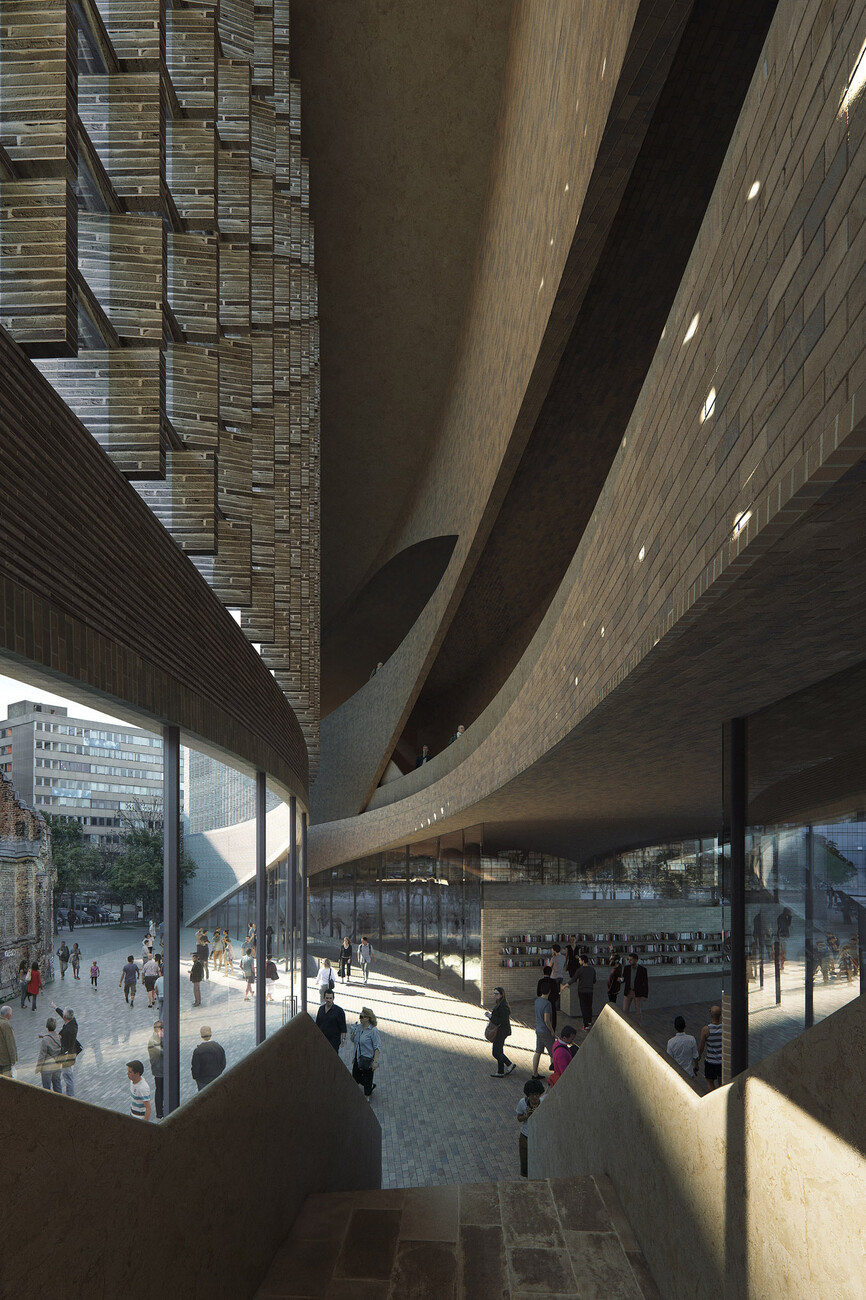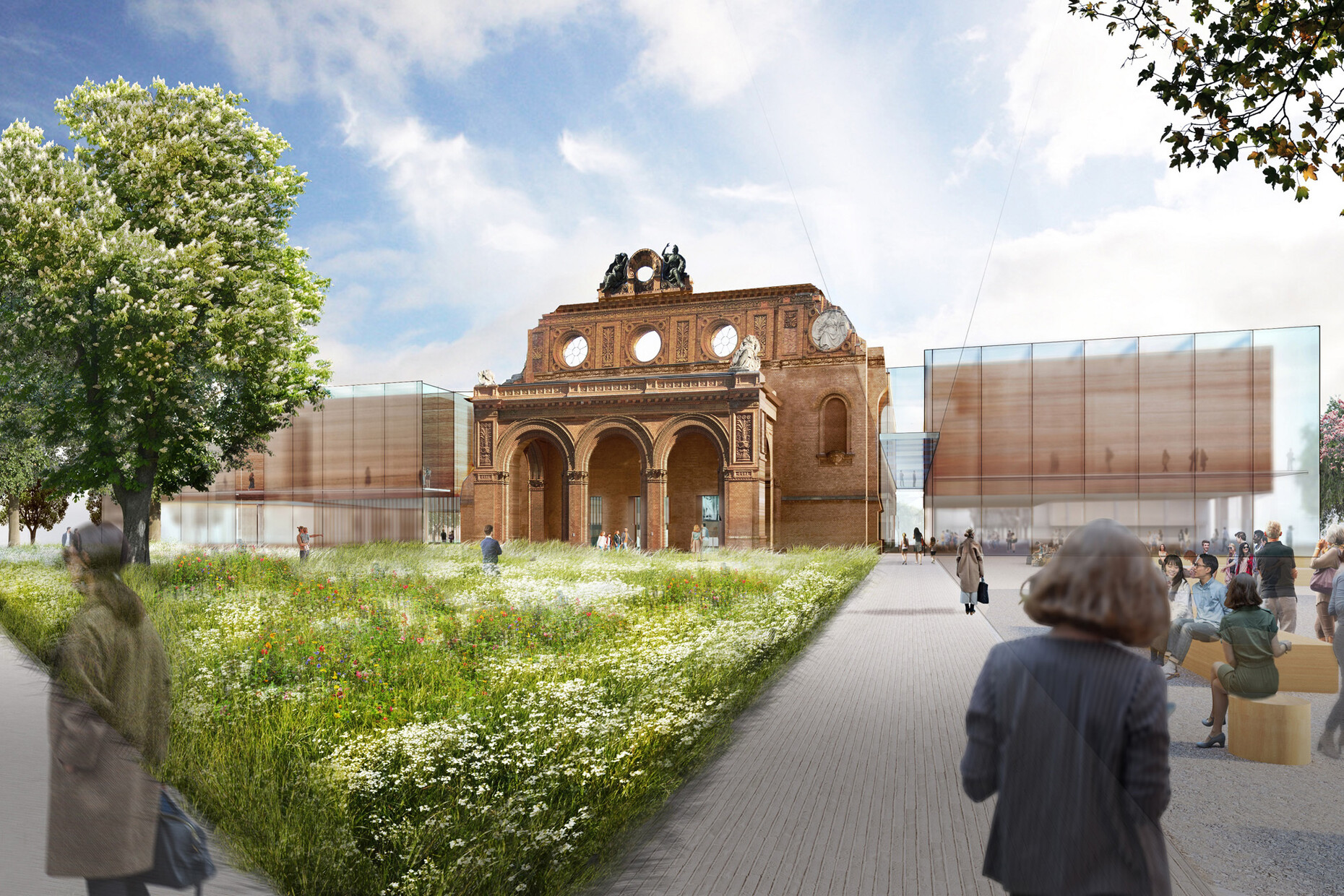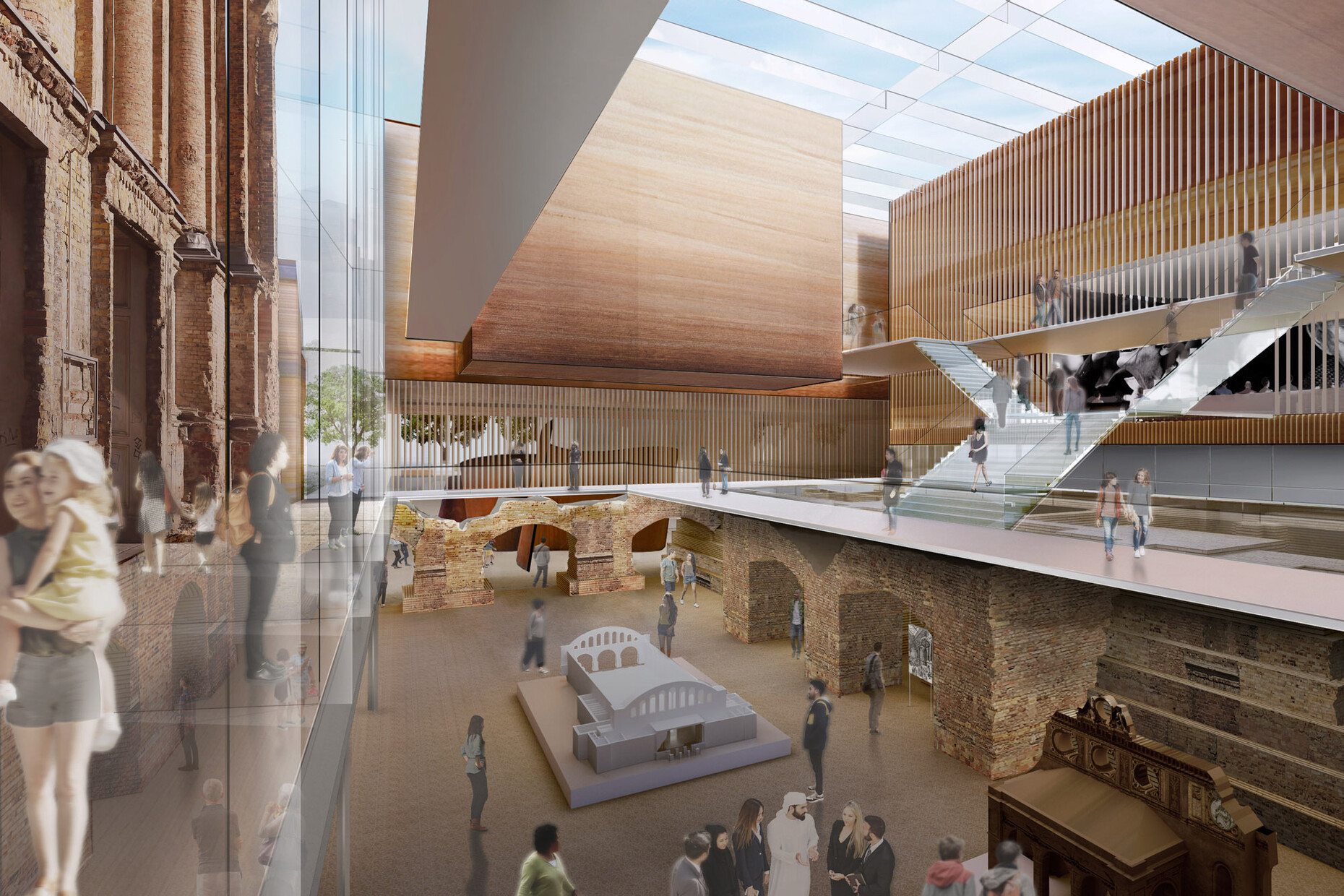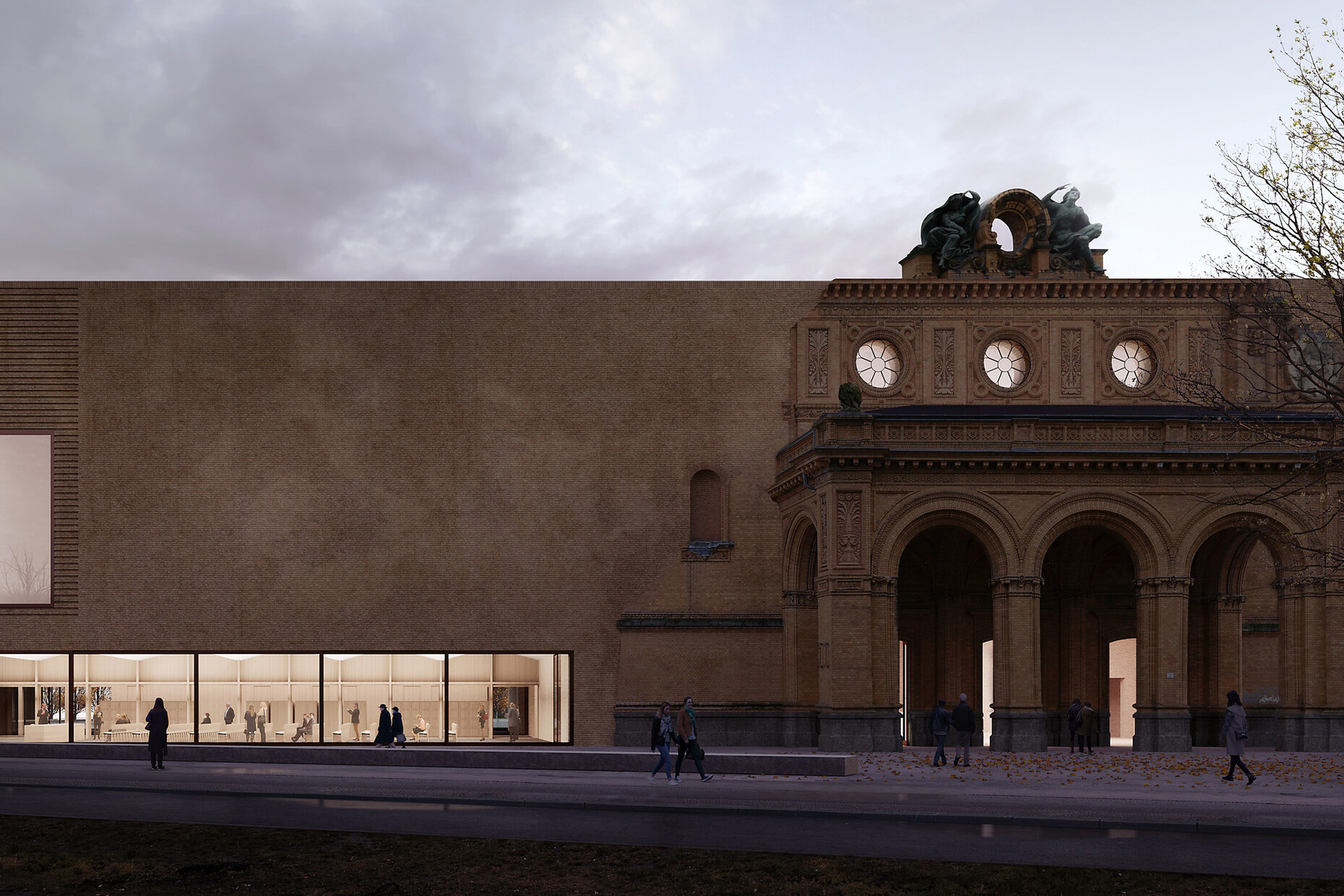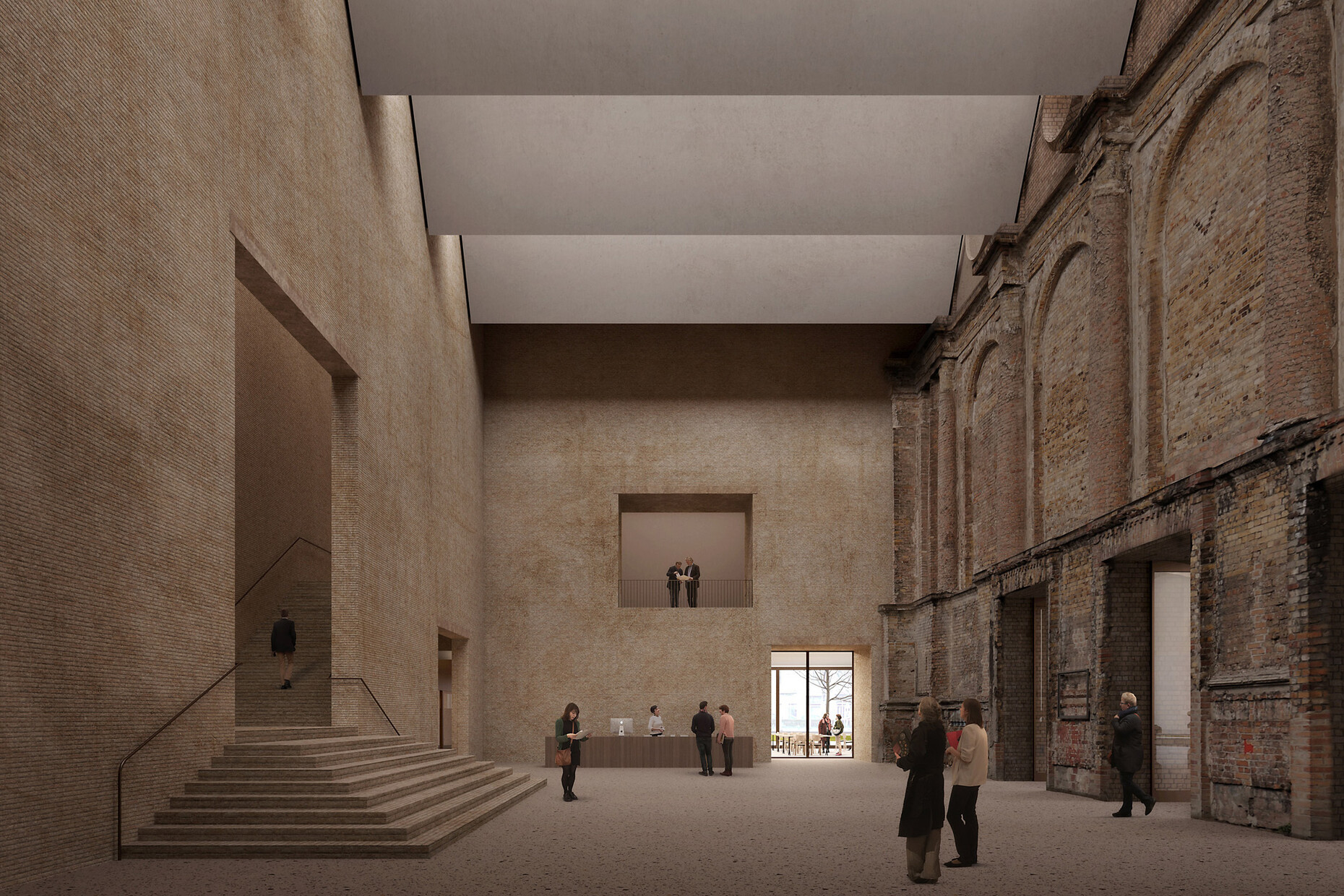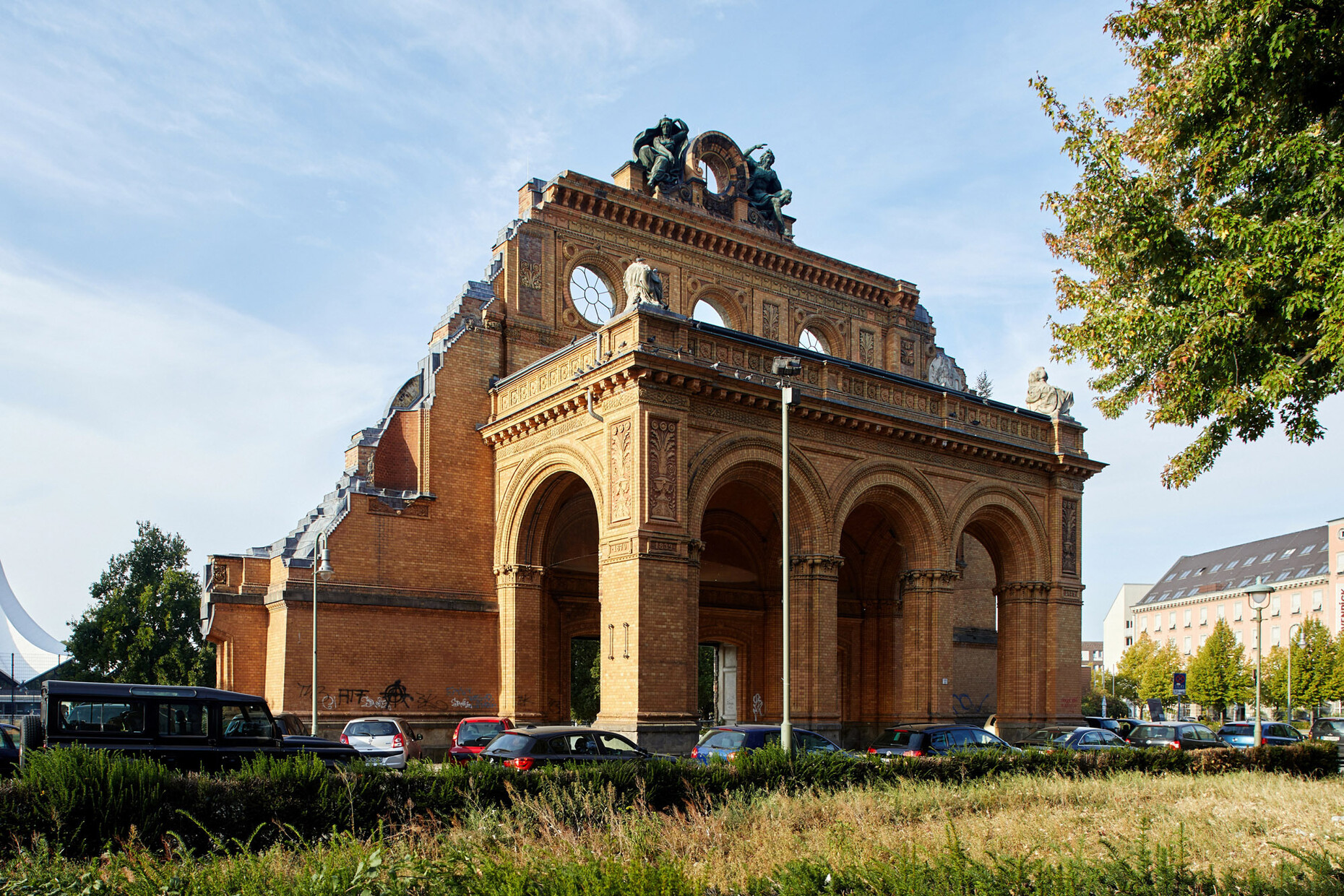Suspended Existence
An Exilmuseum is to be built in Berlin at what used to be the Anhalter Bahnhof. Its opening is scheduled for 2025. The project was preceded by an international architectural competition in which incorporating the ruins of the station's main portico played a major role. Danish architect Dorte Mandrup emerged the winner. The exhibition will address the topic of exile between 1933 and 1945 and also establish points of reference to the present day. Plans foresee a total of 3,500 square meters of exhibition space and 700 square meters for leisure and cultural uses.
Alexander Russ: It was the idea of a civic initiative to have the competition for the Exilmuseum and the Stiftung Exilmuseum Berlin. Can you give us a little bit of background?
Christoph Stölzl: Ultimately, the idea for the museum can be traced back to the work of great portrait photographer Stefan Moses, who from the 1950s took many photographs of emigrants. His portraits formed the basis for the book "Deutschlands Emigranten" which features a series of about 120 biographies. Bernd Schultz, the co-founder of Villa Grisebach, came across the book. And he was the person who suggested the topic be granted greater visibility in the guise of an exhibition space. The idea then had to pass through various stages until it was decided that an Exilmuseum should be built on the site of Anhalter Bahnhof on Askanischer Platz in Berlin.
Winner of the Nobel Prize for Literature Herta Müller is also involved in the project. How did that come about?
Christoph Stölzl: Herta Müller proposed in a letter to Chancellor Angela Merkel back in 2011 that a museum on the subject of exile be created. When Bernd Schultz had the same idea initially neither of them was aware of the other’s efforts. Then three years ago their joint endeavor brought them together. Herta Müller and former German President Joachim Gauck agreed to be patrons of the new museum.
Can you tell us a bit more about the site for the new museum?
Cornelia Vossen: The ruins of the portico to the Anhalter Bahnhof constitute a highly symbolic historical monument. Countless people set off from there to escape persecution during the Third Reich. As a station whence deportation trains left it also stands for the crimes of the Nazi regime. Everyone here in Berlin knows this strange, empty site with the freestanding portico and behind it the football pitch. The new museum is to be built between the ruin and the sports ground.
How does the design by Dorte Mandrup reflect the topic in its architecture?
Christoph Stölzl: It embraces the ruins of the portal as testimony to that history. Moreover, the load of the museum’s volume rests on only a few points. To my mind that very well expresses the experience of exile as a state of a suspended, fragile existence.
The work of the Foundation encompasses partnerships and collaboration with existing institutions worldwide. Which collaborations would you emphasize?
Christoph Stölzl: We are in contact with embassies, archives and donors such as the Exile Archive of the German National Library, the Academy of Arts in Berlin or the Leo Baeck Institute in New York. Naturally, we are aware that there are many private and state initiatives that have addressed the subject for decades, which is why as soon as we had set up the Foundation we did everything we could to network with our predecessors. Accordingly, the new Exilmuseum will also act as a showcase for other initiatives; to this end, an area of some 400 square meters will be available for our partners to use for temporary exhibitions.
How would you describe the curatorial concept behind the exhibition?
Cornelia Vossen: We want to tell people's stories and will primarily do so using media installations, interactive exhibits and where emphasis is required loaned historical objects. This is all about providing visitors with a close-up view of the fates of individual persons. We intend to enhance the narration with a spoken scenography used in moderation. For example, when we show a film it will be presented on an immense screen and in this way work with the concept of space. Another example is the so-called “Path of Exile” that runs through almost all exhibition spaces and is subdivided into several cabinets as rooms within rooms. There we take up themes relating to the overarching topic, namely the experience of exile; examples of such themes are “Waiting”, “Passport / Identity” or “Life in a Foreign Country”. The underlying idea is that visitors enter the individual cabinets where they encounter an associative scenography which illustrates the respective theme of exile combined with quotes from exile literature from the time but also contemporary literature. The key feature is our “Bioscope” – a cinema with a 180° screen where the stories of people's lives are “exhibited” directly. The other exhibition spaces are designed as a linear tour and roughly speaking make up the stages involved on the way into exile.
How do you go about researching into the fates of individuals?
Christoph Stölzl: We have a lot of lists and try with the help of a matrix that is subdivided among other things into parameters such as careers, age, or gender to depict as wide a social spectrum as possible. However, in addition to the selected stories visitors should have the chance to search for other names in a digital archive that will be constantly expanded.
Flight is a highly topical subject. How do you create a link to the present day in the exhibition?
Cornelia Vossen: There will be two halls flanking the toured route: “Century of Exile” and “Exile Today”. The first one will feature a large media installation with several screens that address current experiences of exile and link up with the Nazi era. We would like to work with refugees to create the “Exile Today” hall. For example, right now we are developing an “Alphabet of Arrival”. In this contex, we asked the persons in question what the topic of “Arrival” meant to them. They then developed the terms for the alphabet and their statements are elaborated in a workshop to create texts. Ultimately, it is about showing what lines connect how exile is experienced today and how it was experienced in the past.
You are also planning a 700-square-meter-large area for leisure and cultural offerings for the Friedrichshain quarter in the Kreuzberg district. What will it entail and how will it all be linked with the content of the exhibition?
Christoph Stölzl: The site for the new museum belongs to the district and people there wanted to be able to use part of the museum complex. As the district is home to a very high percentage of immigrants there are sure to be potential synergies between the topics of the district and the museum. For example, the Bezirksmuseum Friedrichshain-Kreuzberg is already very active in this area and among other things develops exhibitions in collaboration with local refugees. We are looking forward to the interaction.
